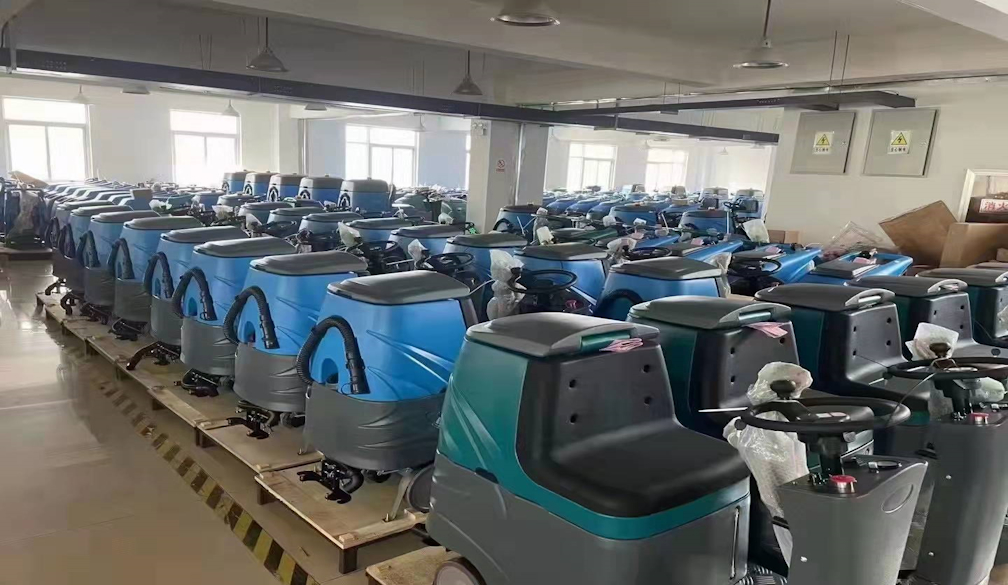Exploring Autonomous Ride-On Sweepers: Future Possibilities
- Written by Gentlemen

Autonomous technology has made strides in years offering the potential to revolutionize various industries. One area where autonomous technology could have an impact is the cleaning and maintenance industry. By leveraging automation businesses, in sweeping and cleaning can enhance productivity reduce costs and improve performance. Specifically autonomous ride-on sweepers have shown promise in this regard. In this article we will explore the benefits and drawbacks of these sweepers and how they could revolutionize urban cleanliness and environmental sustainability.
The Current State of Street Sweeping
Street sweeping plays a role in maintaining cleanliness reducing pollution and enhancing the quality of life in cities and towns. Traditionally street sweepers have been operated by humans who drive vehicles equipped with brooms and vacuum systems to collect debris from roads and streets. While this manual approach has served its purpose over time it does come with limitations.
Limitations of Traditional Street Sweepers
1. Labor Intensive
Manual street sweeping requires a workforce often necessitating operators working different shifts, which leads to high labor costs.
2. Inefficiency
Human operators may not be able to cover every nook and cranny of a city resulting in missed spots and inconsistent cleaning.
3. Lack of Flexibility
Traditional sweepers are bound by operator availability. Struggle to adapt quickly to changes, in cleaning schedules or unexpected events.
The Impact, on the Environment
Typically, conventional sweepers rely on diesel engines, which contribute to air pollution and the emission of greenhouse gases.
The Importance of Automation
The limitations of street sweepers have created an argument for automation. Autonomous ride-on sweepers can address many of these challenges. Bring about an era characterized by efficiency, cost effectiveness and environmental responsibility.
Advantages
Increased Efficiency
One key advantage of ride-on sweepers is their ability to operate continuously without breaks maximizing their cleaning efficiency. These machines can follow defined routes or adapt dynamically to changing conditions ensuring that urban environments remain consistently clean.
Cost Savings
By eliminating the need for operators and reducing fuel consumption autonomous sweepers can significantly reduce operating costs. Additionally, these machines are designed for durability and reliability minimizing maintenance expenses.
Improved Cleaning Quality
Equipped with sensors and imaging technology autonomous sweepers are capable of detecting and removing debris effectively than human operators. This results in streets improved air quality and reduced urban pollution.
Reduced Environmental Impact
The transition to hybrid power sources, for sweepers can greatly diminish emissions and noise pollution.
This aligns, with the efforts to address climate change and enhance the quality of living spaces.
Challenges
Although there is potential for ride-on sweepers there are still a few challenges that must be overcome to fully unlock their benefits.
Reliability of Technology
To function effectively in environments autonomous systems must demonstrate a high level of reliability. System failures or subpar cleaning performance could be attributed to malfunctions or glitches.
Regulatory and Legal Frameworks
The legal and regulatory frameworks governing vehicles and machinery are still being developed. It is crucial to address issues related to liability, safety standards and data privacy before adoption can take place.
Initial Investment Costs
Acquiring and deploying ride-on sweepers may require an initial investment. However the potential for cost reductions and advantages may justify this expense.
Impact, on Jobs
The automation of street processes could potentially displace operators from their roles. It is important to consider the economic consequences of automation and develop responses.
3. Future Possibilities of Autonomous Ride-On Sweepers
Enhanced Data Collection and Analysis
The possibilities, for ride-on sweepers in the future are quite exciting. They can serve as data collection platforms by using sensors and cameras to gather information about environments. This data can then be analyzed to identify patterns areas with pollution levels and places that require attention. By utilizing machine learning algorithms we can optimize cleaning routes and schedules which will ultimately improve efficiency.
Integration with Smart Cities
Moreover, the integration of sweepers into the concept of cities is seamless. These sweepers can communicate with city infrastructure systems like traffic lights and waste management systems to ensure cleaning activities are optimized while reducing congestion.
Sustainability and Electrification
In terms of sustainability and environmental impact a significant step forward would be transitioning the power sources of these sweepers to electric or hybrid options. Not does this reduce emissions. It also opens up opportunities for renewable energy integration, like solar charging stations. Additionally implementing energy technologies can help extend battery life and minimize energy consumption.
Autonomous Fleets
Looking ahead one exciting possibility is the idea of fleets of ride-on sweepers working collaboratively to keep urban areas clean. These fleets could. Coordinate their activities effectively ensuring coverage of the city while reducing cleaning time.
Customization and Adaptability
Another advantage of sweepers is their adaptability and customization options. We can tailor these machines to address challenges faced by urban environments.
For instance different cities have their priorities when it comes to street cleaning. Some may focus on removing leaves during the fall season while others prioritize reducing pollen levels in the spring. Autonomous sweepers are capable of adjusting their cleaning strategies to meet these requirements.
Environmental Monitoring
Moreover autonomous sweepers can serve another purpose well – monitoring. These smart machines come equipped with air quality sensors that continuously assess pollution levels. They can provide real time data to city authorities enabling them to implement strategies, for reducing pollution.
Conclusion
The future of ride-on sweepers looks promising. These machines offer efficiency, cost savings, enhanced cleaning quality and positive environmental impacts. However challenges such as technology reliability, legal frameworks, initial investment costs and potential job displacement need to be addressed.
To fully harness the potential of sweepers in creating more sustainable urban environments within smart city initiatives requires investments in research and development (R&D) legislative clarity and public acceptance. As we move forward with integrating these robots into our cities, we must strike a balance between the benefits of automation and managing the economic impacts associated with job displacement. With planning and implementation measures, in place for centuries to come.



